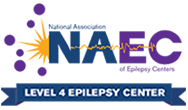
3 Ways to Treat Sciatica Today
The sciatic nerve stretches from the lower back, through each hip and buttock, and down each leg. Sciatica occurs when a herniated disc, bone spur, or spinal stenosis presses against a nerve root. In some cases, this pain can be excruciating, making it difficult to perform daily activities. However, sciatica may go away on its own within three months of conservative care.
What are the symptoms of sciatica?
If you are experiencing pain that comes from your lower back through your buttock area and into your legs, you most likely are suffering from sciatica. Common symptoms may include:
- Pain that gets worse with movement
- Tingling down either leg
- Numbness or weakness in the legs or feet
- The sensation of pins and needles
3 Ways to Treat Sciatica Pain
If you are experiencing mild sciatica, conservative methods may be able to help you find pain relief.
Cold and Heat Therapy
Cold and/or heat therapy can help provide immediate and meaningful relief of sciatica symptoms. Cold therapy can help reduce swelling, lessen pain, numb the area, reduce muscle spasms and decrease inflammation.
Heat therapy works by boosting blood flow and nutrients to the joints and muscles in the body. This circulation helps relieve inflammation and improves mobility. While you may feel like placing the heat pad on the area where it hurts most will provide relief, such as the back of your leg, this area isn’t the source of your pain. Sciatic nerve pain originates from a pinched nerve in the lower back, in which heat therapy will work best in this region.
Get Moving
Getting up and moving around may be the last thing on your list when dealing with sciatica. However, doing so may help relieve your symptoms. When you sit for too long, you are creating pressure on the sciatica nerve as it travels down the gluteus muscles down to the leg. By moving around, you are giving your sciatic nerve a chance to stretch and allow blood to flow through the area.
If you work at a desk for 9 hours a day, try getting up and stretching for 5 minutes every hour. You can even dedicate part of your lunch break to stroll around outside by yourself or with a coworker.
Medications
There are several types of medications that may be used to treat your sciatica, including:
- Over-the-counter pain relievers, such as aspirin or NSAIDs (nonsteroidal anti-inflammatory drugs).
- Prescription muscle relaxants to ease muscle spasms
- Antidepressants for chronic low back pain
- Topical gels, creams or patches, such as menthol, capsaicin, and methyl salicylate
A combination of these treatments may help reduce your pain and stimulate tissue healing. It is important to pay attention to your posture, stay active and continue to move to avoid a sedentary lifestyle.
If these self-care measures have failed to ease your symptoms or if your pain is severe or becomes progressively worse, seek medical attention. For a comprehensive evaluation from the physicians at Brain2Spine Institute, call (727) 828-8400 or schedule an appointment here.






